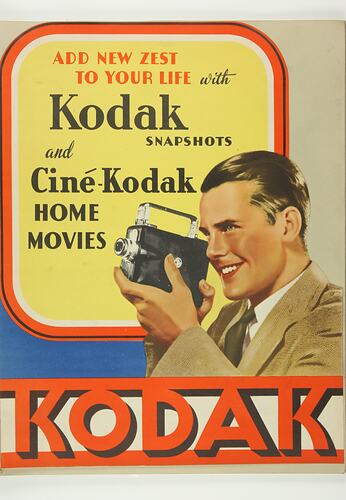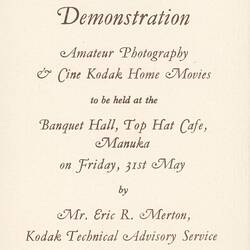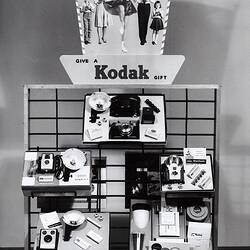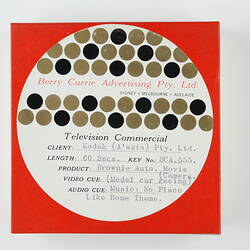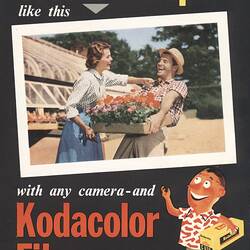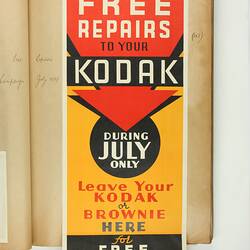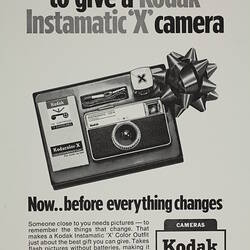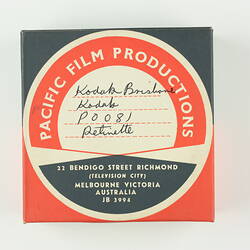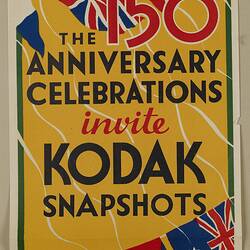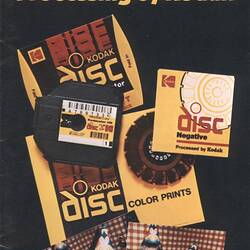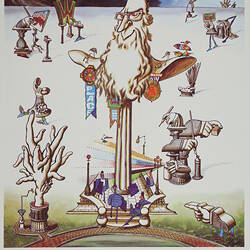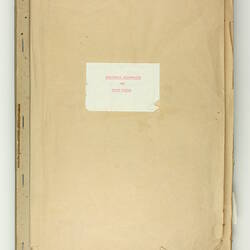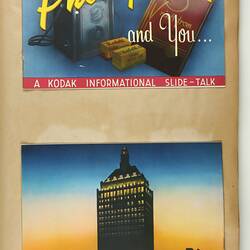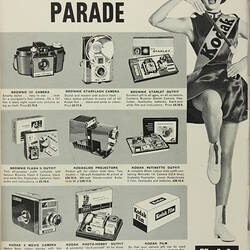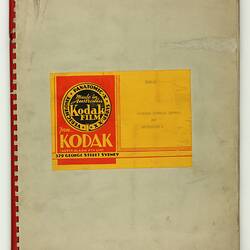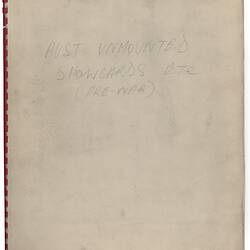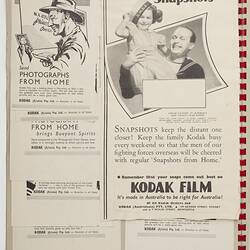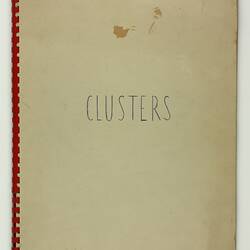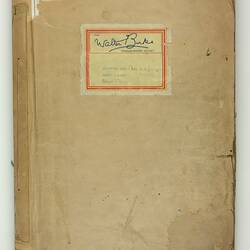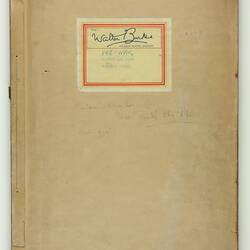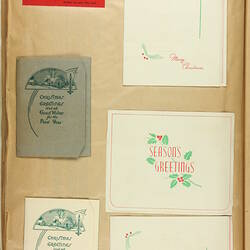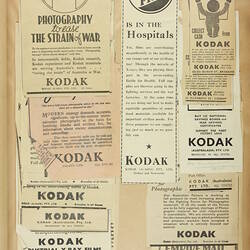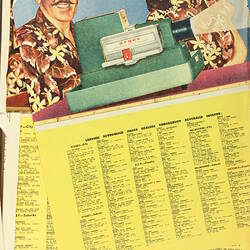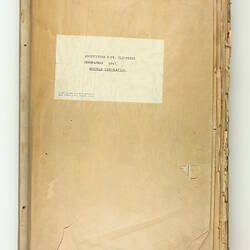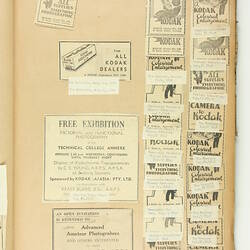Summary
Give Fun, Give A Kodak: Kodak Advertising in the Mid-Twentieth Century.
The majority of advertising and promotional material held in the Kodak Heritage Collection at Museum Victoria dates from the late 1940s to the 1970s. For Kodak Australasia, this period encompassed major production expansion. It was also the time when advertising became a highly lucrative industry in its own right, and television was introduced to Australia. Kodak Australasia kept a comprehensive record of their marketing history during this period in over 100 scrapbooks of printed material and in a library of 16mm and VHS film. The sheer volume of the Collection reveals Kodak's significance in Australian media and advertising history. It encompasses television commercials, posters, brochures, advertising proofs, newspaper and magazine clippings.
Despite the company's household name, Kodak Australasia allocated large sums to advertising and worked with some of the most commercially successful advertising agencies in the Australia to produce their campaigns, including Berry Currie Advertising and McCann Erickson. The agency would work up a campaign to a brief and budget provided by the Kodak Sales and Marketing team. The agency would generally dictate where the campaign would be placed - print, radio, television etc.
According to John Kerr, a former Marketing Manager of Kodak Australasia, 70% of the company's advertising budget was spent in the Spring-Summer holiday period between October and February, and then mostly in the lead up to Christmas. New products were launched at this time because this was when people were buying presents, but also going on holiday, graduating, and partaking in recreational activities. Kodak wanted consumers to photograph these things, and to choose Kodak products over any other.
Throughout the remainder of the year the Kodak marketing team still aimed for 100% brand awareness - a complete saturation of the consumer market so that everyone, no matter their background, would think of and buy Kodak cameras and film. To do this, they placed advertisements widely and used multiple platforms to communicate their message. The main methods of promotion were print and television, but they also sponsored sport and cultural events.
Kodak did not overtly challenge the status quo in their approach to advertising in the mid-twentieth century. Their campaigns, though large, were fairly moderate in approach for their time and were based primarily upon ideas of family, nostalgia and ease of access - approaches which Kodak had been following since George Eastman's first advertisements in America in the late 19th century. Many of the films and printed posters in the Kodak Heritage Collection present the idea that only the camera can capture what you will inevitably forget - birthdays, little children, domestic scenes. Kodak products were also represented as fun and easy to use. Women, children and even elderly grandparents were pictured behind the camera. Easy and fun were two key messages pushed in all Kodak television and print campaigns.
Kodak represented themselves to Australian audiences as a reliable modern company. Into the late 1970s and 1980s, however, the youth market became a key focus of Kodak campaigns. Humour, fashion and sex were used, albeit fairly subtly and modestly, to promote photography as a fashionable leisure past time and social activity. The adventuresome Kodak girl of the early 20th century was, by the 1980s, a bikini body - a fit, active, healthy woman with a big smile and a Kodak camera. But nostalgia, family and fun still remained in Kodak advertisements right up to the 1990s, and even today.
The Kodak Heritage Collection is rich with over fifty years of Kodak Australasia Pty Ltd marketing material, and from it we can see how their design and persuasive approaches have changed over the years.
References
West, N.M (2000) Kodak and the Lens of Nostalgia, University of Virgininia Press, USA
More Information
-
Keywords
Photography, Advertising, Retailing, Promotional Materials, Television Production
-
Authors
-
Article types
